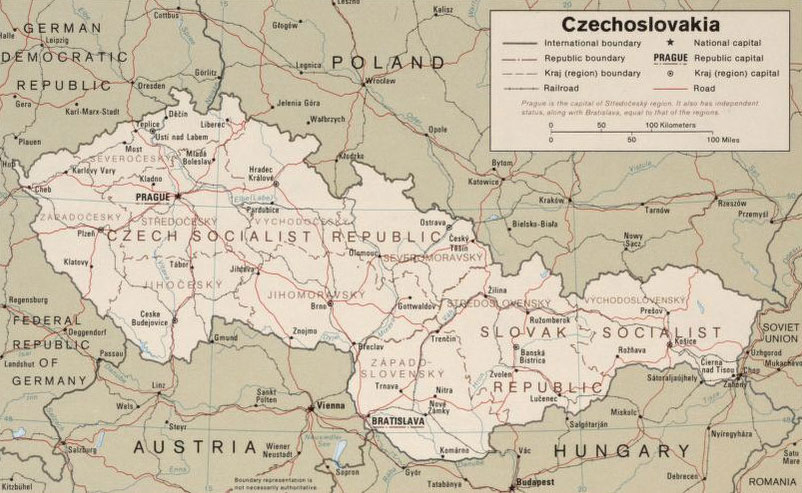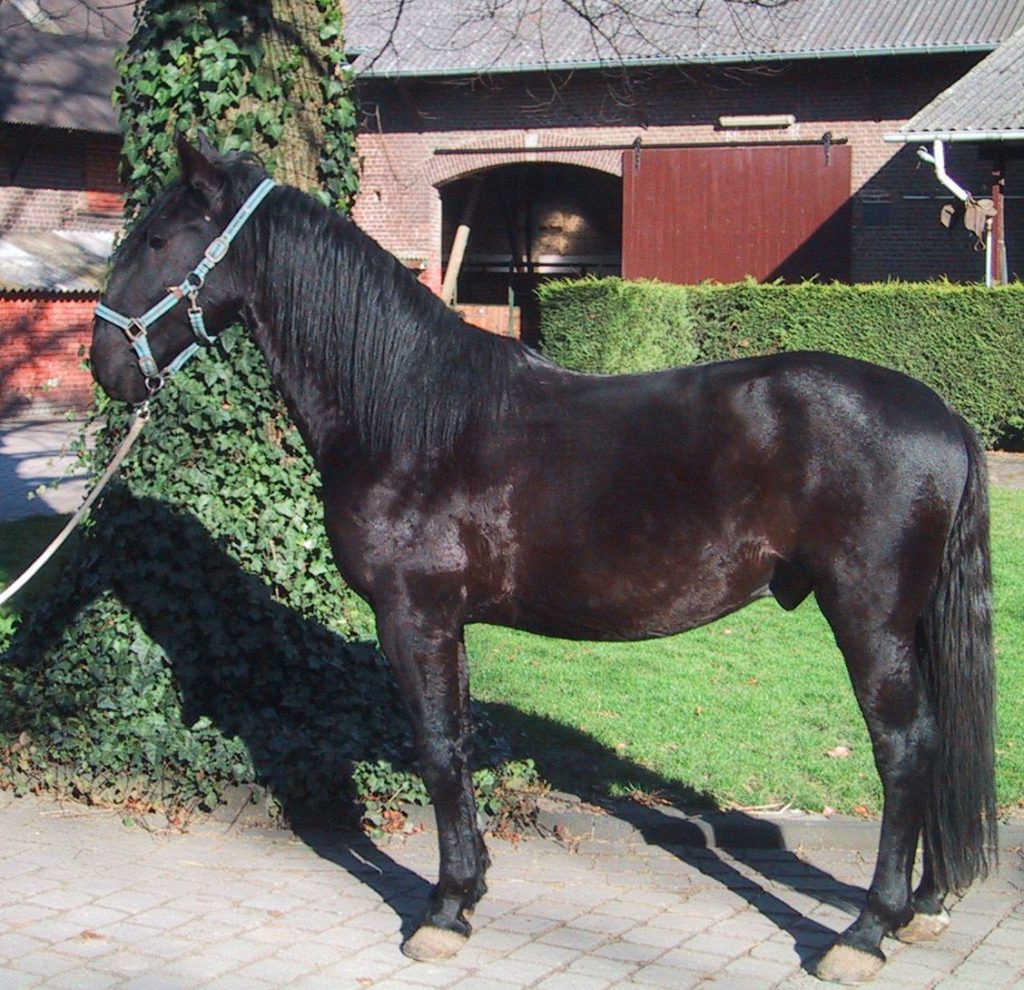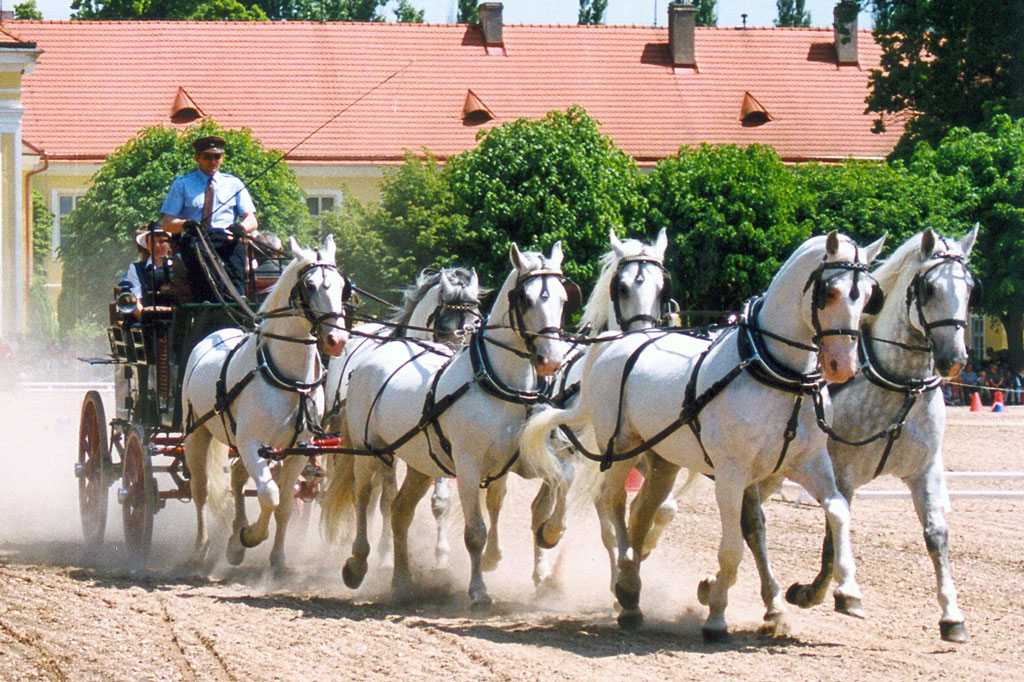The Kladruber horse breed originated in Czechoslovakia and is the oldest horse breed in the Czech Republic, as well as one of the oldest horse breeds in the entire world. It’s a very rare breed and is the only indigenous horse breeds of the country.
The Kladruber horse breed, which has been bred for over 400 years, is extremely rare. As of January 2011, there was an estimated 492 mares only. Its total population is about 1200, with 1000 of these horses living in the Czech Republic. Because of this, the Kladruber horse breed has been listed on the Unesco Czech Heritage site.
The Kladruber Breed History

The Kladruber horse breed was bred in the stud at Kladruby nad Labem which was founded in 1579 by Emperor Rudolf II as an imperial stud at the Pernstein stable in Czechoslovakia.
To create this rare breed, a mixture of imported Spanish and Italian horses were crossed with several bloods like the Danish, Irish, Neapolitan, Holstein, and Oldenburg blood- as well as some of the heaviest Czech breeds. The result was a multi-class horse breed renowned for its distinctive physical features, immense strength, speed, and steadiness.
The breed was primarily developed to become a galakarosier, which is a heavy type of carriage horse mainly used to pull the imperial coach, usually in a four or six horse team to various important ceremonies and funerals.
Initially, the horse was bred in a variety of colors such as appaloosa and palomino. However, by the 18th century, the breed was strictly refined to gray or black. This was due to a breeding program that required 18 white (full mature grays) and 18 black stallions for use in various ceremonies of the imperial court.
During the Seven Years of War global conflict in Slovakia, Kopcany, and Enyed, Hungary, the Kladruber stud was evacuated. This was due to a fire that completely ravaged the stud and destroyed the breeding records of the earliest 200 years. The remaining breeding horses were brought back to a new stud in Kladbury.

According to the surviving breeding records, several stallions had a significant influence on the gray Kladruber herd.
One of the major influencers was Pepoli, a gray stallion who in 1787 sired the colt Generale in Kopcany. According to the records, all gray Kladrubers can be traced to Generale. Generale’s son, Generalissimus, who was born in 1797 is said to have produced a separate lineage.
The Maestoso stallion born in 1773 and Favory born in 1779 in Kladruby are known to be two of the six founding Lipizzan stallion lineages. After World War II, Favory was returned back to the Kladbury stud in order to add new blood to the already declining herd.
Both the Barzoi and Legion breeds added new blood between World War II and III. Rudolfo, a Lusitano sourced from Portugal added new blood after the second World War.
The herd of black Kladrubers also had significant influencers, the Sacramoso stallion born in 1799 as well as the Napoleone stallion born in 1845. They were both regenerated in Slatinary, a town in Pardubice Region of the Czech Republic.
There are significant differences between the black and gray Kladrubers due to their breeding. The gray Kladruber is slightly taller than the black Kladruber. Its physical characteristics are almost similar to those of the Thoroughbred breed. The black Kladruber, which has more Neapolitan blood, is shorter and heavier with a shorter croup. The head and neck are different from the gray Kladrubers as well. It has a more “Nordic” look.
Sadly, the herd of black Kladrubers sired by Sacramoso and Napoleone no longer exists. In the 1930s, the population of the black horses from this line greatly reduced after a huge majority of the animals were sold for meat. By the 1930s, only around 20 black horses were saved and luckily, breeders made huge efforts to restore their bloodlines at The Research Institute for Horse Breeding, which is the new stud in Slatinany.
Today, the number of black Kladruber horses is almost equal to that of gray Kladrubers.
The Modern Day Kladrubers
The Kladrubers are incredibly rare. The current population is estimated to be around 1200. At least 1000 of these horses are in the Czech Republic with about 500 owned by the National Stud.
Since it’s a rare breed, the Kladruber has been listed in the UNESCO Czech Heritage Site. The horses are commonly used at special events in the Czech Republic. They are also used to pull the Queen’s carriage in Denmark and for certain ceremonial occasions in Sweden. The Kladruber horse breed is also commonly used as police horses and in FEI sports.
Kladruber Breed Physical Characteristics
A big majority of modern Kladrubers are gray. The rest are black in color. Many of these animals are quite tall and fine, standing between 16.2” hands high. They are known to maintain good speed in harness.

One of their most distinguishable physical characteristics is their convex Roman facial profile which is said to have been inherited from their Baroque ancestors. The rare horse breed also features a deep and broad chest, and sound legs with incredibly large joints and hooves. Although their long backs, upright shoulders, pasterns and hooves, and short coups don’t make them suitable riding horses, these specific qualities however make them excellent driving horses. These characteristics give them a high-stepping gaits as well as their trademark high front leg action in the trot.
On countless occasions, the breed has been used in world championship four-in-hand driving classes.
The Kladruber’s high-set, well-arched and powerful neck was actually a trademark feature of their Spanish and Neapolitan ancestors.
Other notable characteristics include a thick and flowing mane, thick and long tail, unfeathered legs, and a lean rather than fleshy body. They also have large, expressive eyes and are generally strong, graceful, agile, highly intelligent, and even-tempered.
The Kladruber on several occasions is crossbred with lighter horse breeds with the purpose to produce a more suitable riding horse, typically for dressage (a form of riding performed in competitions and exhibitions).
Kladrubers have an average lifespan of between 25-30 years.

Lydia King is a huge animal lover and has always been fascinated with learning about the animal kingdom. She enjoys writing about anything animal related from scientific information about rare species to animal references in pop culture.












